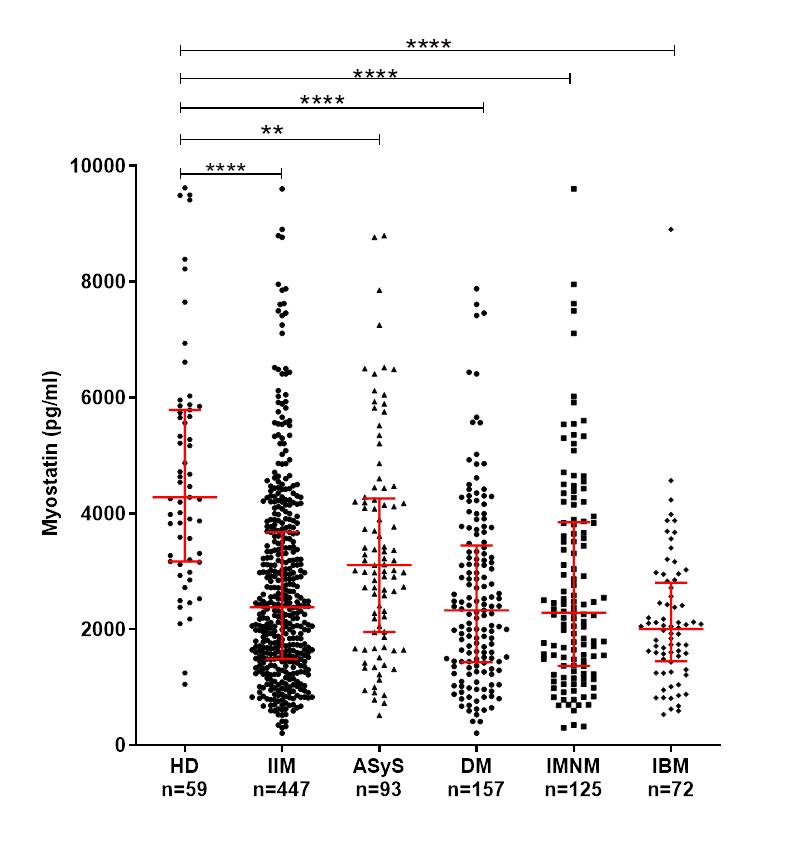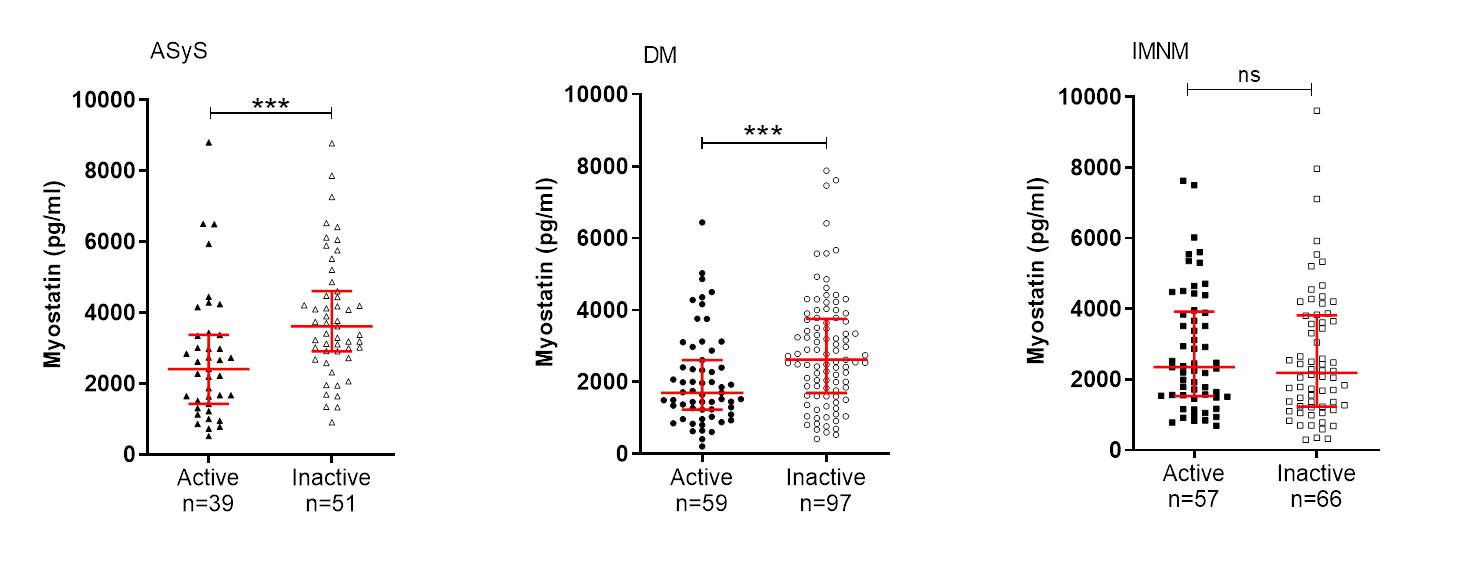Session Information
Session Type: Poster Session B
Session Time: 8:30AM-10:30AM
Background/Purpose: In Idiopathic Inflammatory Myopathies (IIM) disease activity is very difficult to assess and IIM may induce severe muscle damage, especially in immune-mediated necrotizing myopathies (IMNM). We hypothesize that myostatin, a negative regulator of muscle mass, could be a new biomarker of disease activity and/or muscle damage.
Methods: Prospective assessment of myostatin protein level in 447 IIM sera samples (dermatomyositis (DM), n=157; inclusion body myositis (IBM), n=72; immune-mediated necrotizing myopathies, n=125; anti-synthetase syndrome (ASyS), n=93) and 59 healthy donors (HD) was performed by ELISA. A gene transcript analysis was also carried out on 18 IIM muscle biopsies and 6 HD to analyze the expression of myostatin and myostatin pathway genes.
Results: IIM patients had lower myostatin circulating protein levels and gene expression compared to HD (2379 [1490; 3678] pg/ml vs 4281 [3169; 5787] pg/ml; p< 0.0001 and log2FC=-1.83; p=0.0005 respectively) (Fig1). Myostatin-related genes expression varied accordingly. Myostatin circulating levels were then assessed for each subgroups. Myostatin levels were lower in ASyS (3109 [1952; 4258] pg/ml; p=0,001), DM (2327 [1431; 3446] pg/ml; p< 0.0001), IMNM (2285 [1371; 3851] pg/ml; p< 0.0001) and IBM (2005 [1449; 2803] pg/ml; p< 0.0001) compared to HD (4281 [3169; 5787] pg/ml) (Fig2). Based on the Physician Global Activity score, inactive IIM patients had higher myostatin levels than active ones. This was the case for all IIM subgroups, except IMNM patients where low myostatin levels were maintained (2186 [1235; 3815] vs 2349 [1518; 3922] pg/ml; p=0.4) even during remission (Fig3).
Conclusion: Myostatin protein and RNA levels are decreased in all IIM patients and circulating protein levels are correlated with disease activity. Inactive ASyS and DM patients have higher level of myostatin than active patients. Myostatin could be a marker of disease activity in these two subgroups. However, IMNM patients do not have a significant increase in myostatin levels after disease remission. This observation may highlight a new pathological disease mechanism in IMNM patients.
FST: follisatin, MYOG: myogenin, MYF5: myogenic factor 5, INHBA: inhibin A, DCN: decorin, TRIM63: Tripartite Motif Containing 63, FBXO32: F-box Protein 32, MSTN: myostatin
To cite this abstract in AMA style:
Mahoudeau A, Anquetil C, Tawara N, Khademian H, Amelin D, Allenbach Y, Benveniste O. Myostatin in Idiopathic Inflammatory Myopathies: Seric Assessment and Disease Activity [abstract]. Arthritis Rheumatol. 2021; 73 (suppl 9). https://acrabstracts.org/abstract/myostatin-in-idiopathic-inflammatory-myopathies-seric-assessment-and-disease-activity/. Accessed .« Back to ACR Convergence 2021
ACR Meeting Abstracts - https://acrabstracts.org/abstract/myostatin-in-idiopathic-inflammatory-myopathies-seric-assessment-and-disease-activity/



